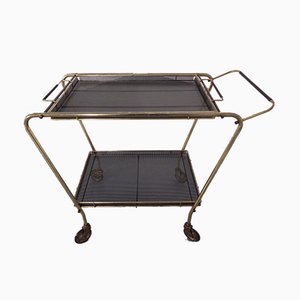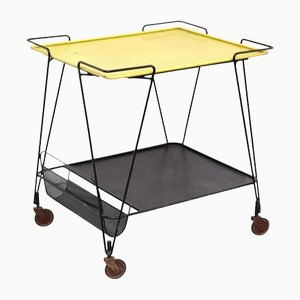
Hungarian-French designer and tapestry maker Mathieu Matégot was born in 1910 in the suburbs of Budapest. After graduating from Budapest’s School of Fine Arts in 1929, he travelled abroad—as many young people do. After spending time in the US and Italy, Matégot settled in Paris in 1931 and took work as a set designer and window dresser for arty Parisian hotspots, like the Folies Bergère and the Galerie Lafayette department store.
In the years leading up to World War II, Matégot began designing furniture, especially exploring rattan woven around metal frames. Along with many foreign artists at the time, he joined the French resistance. Captured by the Germans, he was requisitioned to work in a German factory. He was released in 1944 and was awarded French citizenship.
After the war, Matégot established Parisian workshop, dedicated to experimental, handcrafted furniture and objects. His designs explored a variety of materials, like metal, glass, Formica, woods, textiles, and leather. His most successful designs incorporated metal tubing and perforated sheet metal, with a technique he patented and named Rigitulle in 1952. He developed a machine that could bend and fold sheet metal like a piece of fabric, which was used to create a number of distinctive designs, such as the Java Table Lamp, Soumba Tables, Bagdad Lamp, Satellite Pendants, and Nagasaki Chairs. After few years, Matégot opened a second workshop, called Société Matégot, in Casablanca, where he was able to broaden his production to include small decorative objects , like trays , wastebaskets, and magazine-holders , side tables .
In 1959, Mathieu Matégot stopped designing furniture. He moved to Angers and dedicated himself exclusively to the creation of abstract tapestries until he passed away in 2001.


